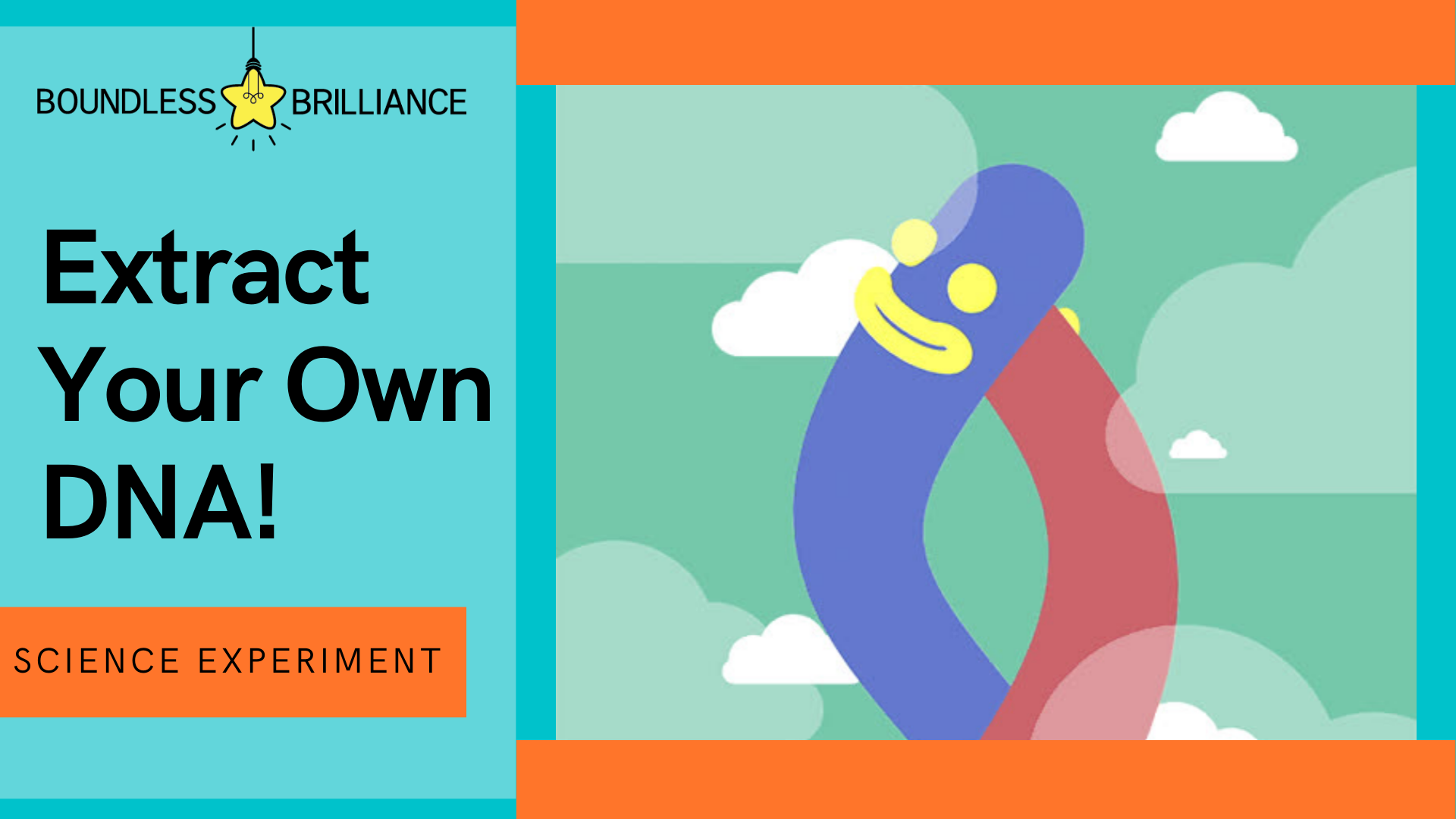Can you believe that you can see your own DNA using simple household experiments? Well… you can!
Find out how with this experiment and extract your own DNA.
Materials:
Three plastic cups, water, food coloring, isopropyl alcohol, stirring stick, salt, clear dish soap.
Time Estimated:
15-20 minutes
Directions:
In the first cup, pour in 500 mL of water (about one water bottle) and 1 tablespoon of salt. Stir well!
Without swallowing, gargle some of the saltwater solution for about a minute and spit it into a second cup.
Next, slowly add a drop of dish soap to your second cup and gently mix. Try to minimize the amount of bubbles!
In the third cup, pour in about half a cup of isopropyl alcohol and a drop or two of food coloring — the darker it is, the better. Mix well!
Then, tilt the second cup (containing the spit-out saltwater) and carefully pour the contents into the dyed rubbing alcohol mixture.
Wait for 3-4 minutes for the DNA to settle!
If you shine a flashlight on top of the solution, you should be able to see a film of DNA on the top layer! If you are looking at the cup from the side, you might be able to spot some white DNA clusters floating around as well!
Think Like a Scientist:
How did this process work?
What would happen if we added the soap, alcohol, and salt in different orders?
How It Works:
In this activity, you experimented with chemistry to extract DNA from your cheek cells!
DNA is the genetic code for all living things; think of it as a set of instructions for how something is made. It is responsible for giving you your eye color, your face shape, your height, your hair color, and everything else that makes you unique!
In this experiment, each ingredient had a purpose. Let’s start by discussing why we added the salt. Because our DNA is located inside of our cells, we used salt to break down the cell membrane. Think of the membrane as the walls of a house. In order to get something that is inside of the house, we need to get through the walls; this is where something like a door comes in handy. In the case of DNA, we need to break down all of the walls, and this is exactly what the salt does!
Now, why did we add the soap? Let’s first think about what soap does when we wash our hands. It separates all of the little germs, dirt, and bacteria from our hands so that they become clean. In the same way, adding soap to our solution separates our DNA from the other pieces or components of the cell!
Finally, when we added the alcohol to our solution, all of the little DNA molecules were able to come together to form a film layer, as well as little floating clusters! In chemistry, this process is also called precipitation. Precipitation occurred because DNA is insoluble, or it is not able to dissolve, in alcohol. Therefore, we were able to see the solid DNA separate from the liquid solution!
Looking for more fun at home STEM activities for your young scientist? Check out our workbook full of exciting science experiments and empowering activities!



